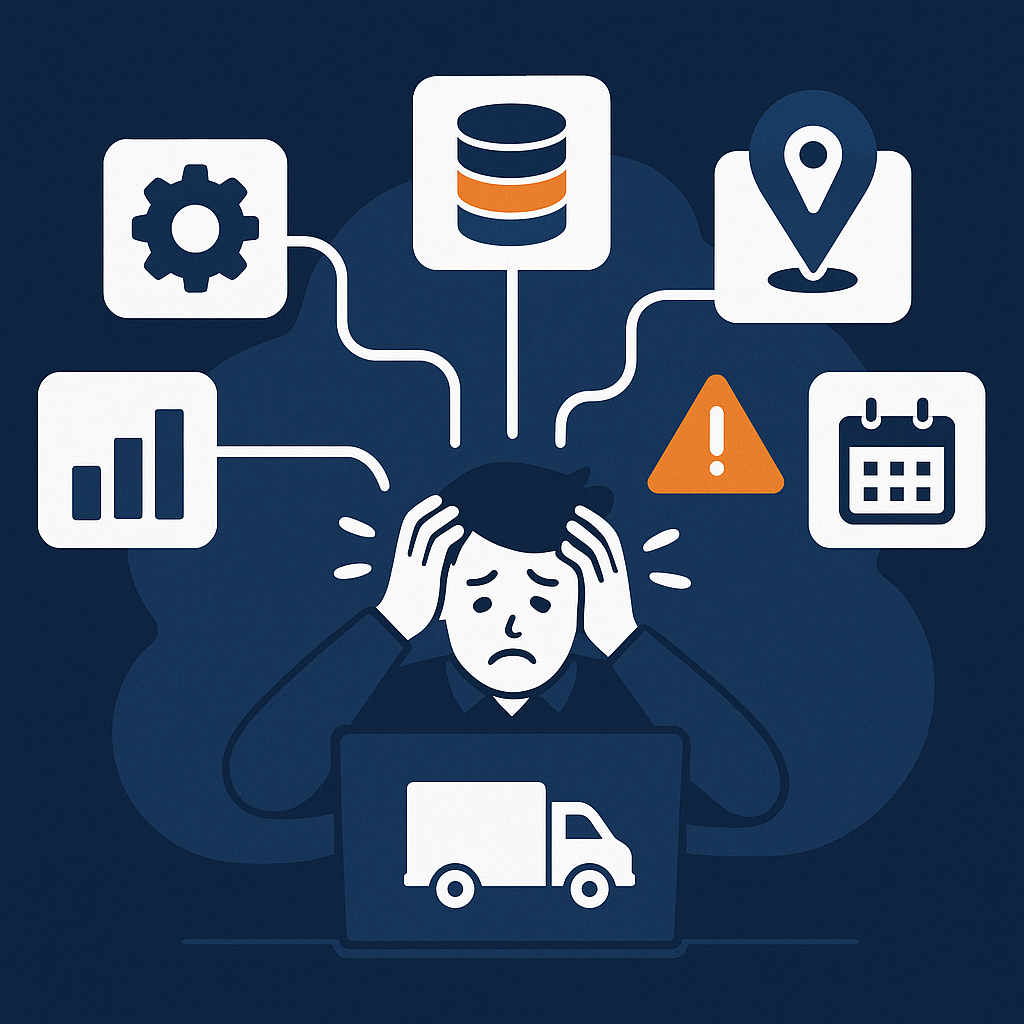


The 5 biggest mistakes transport companies make with integration projects – and how to avoid them!

When managed correctly, an integration project will allow transport companies to connect their disparate data sources and gain a 360-degree view of their business to make informed decisions. However, many transport companies make mistakes when planning and executing these projects, which can lead to sunk costs, data disparities, a loss of function, and the risk of project failures.
In this article, we look at a few of the most common mistakes that companies make when planning their integration projects, and our CEO, Shane Mann, provides his expert guidance on how to avoid making them.
- Leading with the technology, not the information
Information technology (IT) projects commonly fail when they lead with the “technology”, as opposed to the “information”. These projects struggle to deliver the information to aid strategic business decisions, and commonly result in untrustworthy data, full of blind spots.
Business people are not thought of and not put in a comfortable place, data quality problems are amplified and stored up for expensive data cleansing and validation efforts right at the end of the project.
Shane’s advice:
To create integrations that truly support the company, technology should be the”how”, not the “why”. By leading with the desire to better understand and gain greater value from the business information, the integration can create a very clean picture, in the language of the business user. They can see the strategy, and the technology is there to support that strategy.
For example, an information-led strategy may be:
“We need to get information from each of these independent data sources (silos) and integrate it into a reliable, trustworthy single source so that we can create an information-led culture. We want to create high-quality dashboards to make informed decisions in a timely manner.”
- Lack of oversight on the status of integrations
An integrated system may take data from a large number of previously siloed data sources. Many integration projects are run by the IT team, which is disconnected from the business users, and there is a resulting lack of visibility on the status and integrity of the data transfer process.
Shane’s advice:
Integration projects need to be taken out of dark rooms and exposed to the light. The business user should have access to a consolidated view of all of the integrations, so that they can easily see their status.
While you may be able to integrate systems through API 70% of the time, you will also need access to tools that allow you to extract information from different sources, without losing integrity or richness.
- Dirty data
Unfortunately, even with modern data integration methods, the new system will still end up with some amount of dirty data. With data coming from disparate methods and in different formats, you can commonly expect to find duplicates, or for it to be incomplete and with inaccuracies or inconsistencies.
The continued presence of dirty data in an integrated system makes it hard for the user to trust in the integrity of the information they derive from it.
Shane’s advice:
The solution is to have one place where problematic data that has not passed the integration rules is held, so that you, or your vendor, can manage and clean it. With the resulting clean data, you can gain trust in the system and see the bigger picture.
- Poor data foundations
During integration, it’s common for data to be rolled up to a high level, be that to the cost centre or region. This puts the user at a significant disadvantage, since they are disabled from data mining to truly understand their data, and creates a heavy administrative burden to try to get any value from it. You will ultimately only ever be able to report on your information at this higher level.
Shane’s advice:
From a cost management perspective, although it is true for any kind of management, you need to build the foundations for your data at the most granular level of storage. For transport, this is at the level of assets (e.g. vehicles) and people (e.g. drivers and technicians).
This methodology aids decision making by allowing you to build reports, dashboards and KPIs from that low-level foundation, which can then be rolled up to the higher level of region or company when required. When a problem manifests, you can easily data mine and drill into the data to understand it. This gives more time back to the workforce, in the knowledge that the information is all there and up to date. It provides a helicopter view that can be interrogated as necessary.
- Not providing timely information
If after integration, your finance team is still having to wait until the end of the month to receive the information they need for billing, then the project has failed. By that stage, it will be too late to fix any costly problems and you’ll have lost control for the entire period.
Shane’s advice:
By building your foundations with granular data, you can focus on specific costs such as fuel, labour, consumables and maintenance on a daily or hourly basis.
Period-end reports are created organically, and the business user has complete visibility each and every day, rather than having to complete a time-consuming data pull exercise at the end of the month. As a result, if a cost or issue occurs, that cost will be incurred for a day, not a month.
The Tranzaura way
At Tranzaura, we let information strategy lead the integration process. Disparate, siloed data is turned into trustworthy information, and high-quality dashboards, KPIs and reports make period-end reporting a thing of the past.
The result is powerful, real-time information that aids strategic decision making, allowing you to see changes as they happen and to drill into the data to really understand it.
Want to make your integration project a success? Our system is built entirely on API’s, meaning that we can integrate with other providers making sure your data is always there for you. If this is something you’re in need of, talk to one of our team today.

Ready to try FleetNow?
Try FleetNow Insights first, or dive straight in and experience some of our AI-powered intelligence tools or cloud software solutions.

